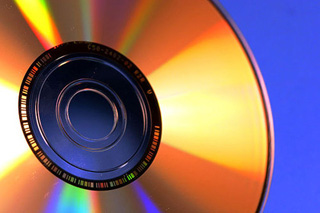
The compact disc (CD) still remains the standard playback format for commercial audio recordings. Audio CDs consist of stereo tracks stored using 16-bit pulse-code modulation and coded at a sampling rate of 44.1 kHz. Recording and playback of the CD utilize many of the digital signal processing techniques discussed in this course. (Image courtesy of Darren Hester [PPDigital].)
Instructor(s)
Prof. Alan V. Oppenheim
MIT Course Number
6.341
As Taught In
Fall 2005
Level
Graduate
Course Description
Course Features
Course Highlights
This course features a complete set of lecture notes and assignments which tie directly into the required textbook: Oppenheim and Schafer with Buck, Discrete-Time Signal Processing, 2nd ed, Upper Saddle River, NJ: Prentice-Hall, 1999, ISBN: 0137549202.
Course Description
This class addresses the representation, analysis, and design of discrete time signals and systems. The major concepts covered include: Discrete-time processing of continuous-time signals; decimation, interpolation, and sampling rate conversion; flowgraph structures for DT systems; time-and frequency-domain design techniques for recursive (IIR) and non-recursive (FIR) filters; linear prediction; discrete Fourier transform, FFT algorithm; short-time Fourier analysis and filter banks; multirate techniques; Hilbert transforms; Cepstral analysis and various applications.
Acknowledgements
I would like to express my thanks to Thomas Baran, Myung Jin Choi, and Xiaomeng Shi for compiling the lecture notes on this site from my individual lectures and handouts and their class notes during the semesters that they were students in the course. These lecture notes, the text book and included problem sets and solutions will hopefully be helpful as you learn and explore the topic of Discrete-Time Signal Processing.


